Marketing an Experience: 7 Ideas for Engaging Customers
Marketing an experience is where you create a unique environment or experience that makes people want to engage with your brand. You create value for your customers in how they feel or think about your product, whether it be emotional, intellectual, physical, or spiritual.
You might be surprised by what you'll discover if you pay attention to what your customers say about your product or service—instead of simply reading what you hear in ads, social media posts, and the news. In this series, you'll learn how to analyse online customer conversations to get valuable insights that will help you understand why your customers have said certain things about your brand. Once you understand the emotional drivers behind customer comments, it will be much easier to craft a message that resonates with your ideal customer.
The key to successful marketing is understanding that your customers want an experience—not a product. They want to know that you care about their feelings, needs, and desires. They want to feel heard and appreciated. They want to feel valued. They want to see your business and its mission aligned with theirs. They want to be inspired, excited, and emotionally moved by your brand and products.
A successful business isn't just about the products or services you sell; it's also about the experience you offer.
It's not enough to create a product or service that people want or need; you need to create an experience that engages them and keeps them coming back.
You can't force customers to buy from you, but you can make it so that they won't want to do anything else.
So, how can you create experiences that engage and keep customers coming back?
Table of Contents
What does Marketing an Experience mean?
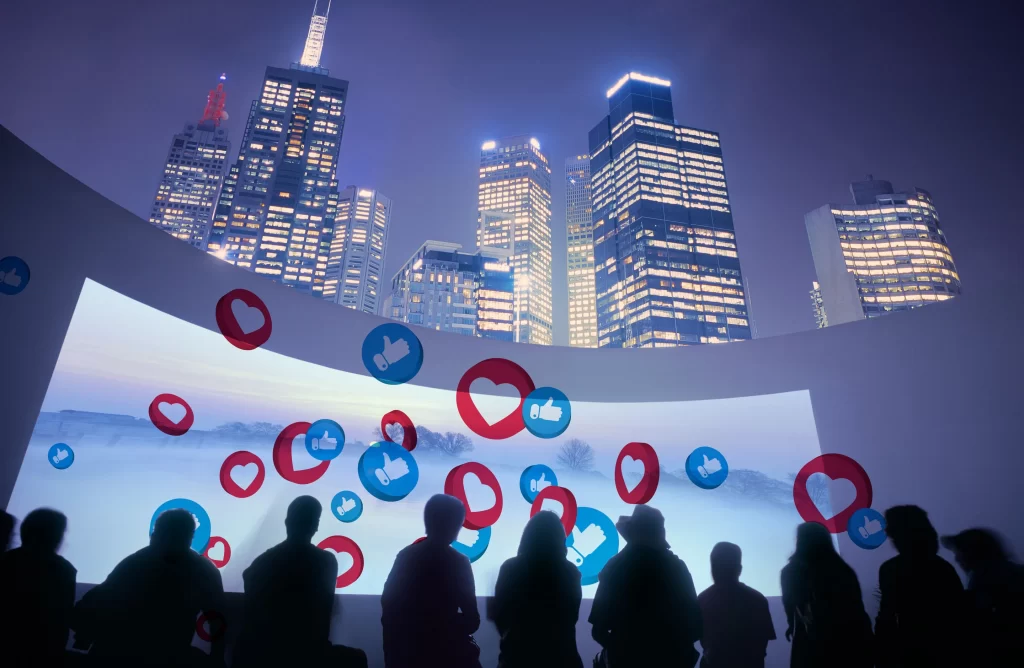
Marketing an experience means creating and communicating to the public the experience of attending a concert, experiencing a festival, riding a roller coaster, or going to a restaurant.
It's important to consider how you will market your event. Marketing includes everything you do to attract people to your event, whether through social media, word of mouth, advertising, website promotion, or any other medium.
The most effective marketing strategies speak directly to your target audience. This could be a segment of the population you'd like to reach, a location, or a type of person. To market effectively, you need to know who your audience is, what they want, and where they are.
Marketing an Experience Means to Reach Your Target Audience
The best marketing strategy is knowing your target audience and their wants. You can't attract a crowd without knowing who your crowd is.
You may have much experience with festivals, music festivals, and concerts, but it doesn't mean you understand your target audience and what they want. You might assume they're a certain age, like teenagers, young adults, or adults. Still, you may find that they're families, college students, retirees, or people that love festivals, music festivals, and concerts.
You may think the target audience is millennials, but your audience is baby boomers, Generation X, Generation Y, and older people. You may also think your target audience is single people, but they're couples, families, and groups of friends.
It's a common misconception that people will automatically attend your event if you put on a great show. They will, but they need to know about your event before they attend. The most successful marketing plan is to create an experience that speaks directly to your audience.
The Ultimate Goal of Marketing is Engagement
Your ultimate goal is to build engagement, meaning people will come to your event to interact with you. You may have a great band, but if people don't know about the band or its members, there won't be a crowd.
Marketing an experience means telling your audience what you're going to do and what they're going to experience, so people will have an idea of what to expect from your event. They may come to your event with a list of what they want to see, and that's great, but it may take some time for them to discover you and your event.
This is where the word “engagement” comes into play.
Engagement Means having a Presence and Connect with People.
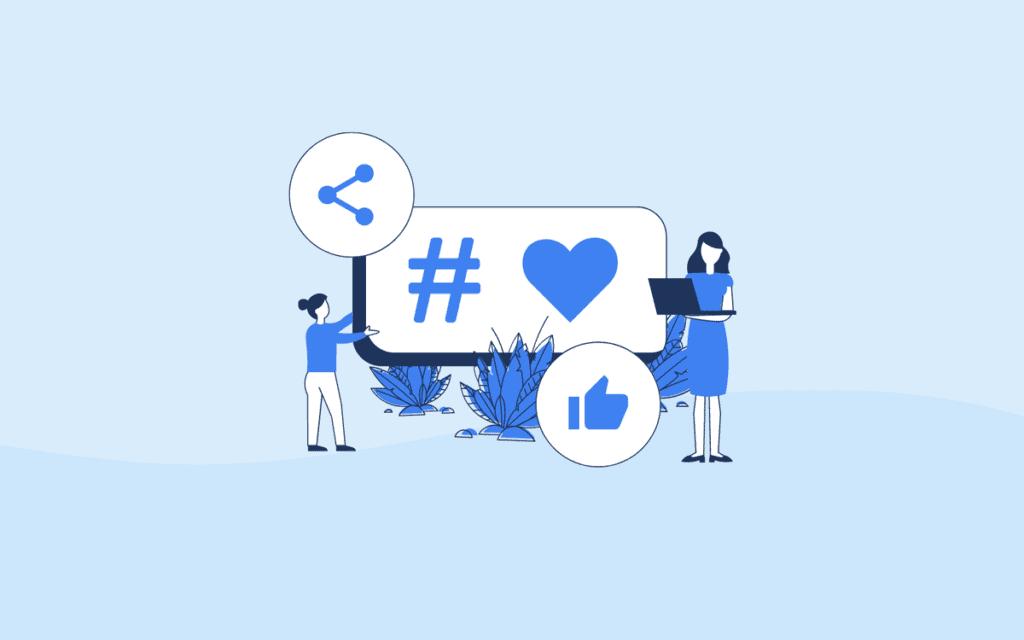
Engagement means having a presence in your audience's minds, so they'll know about you. You don't have to be on their minds all the time. The best marketing strategy is to engage your audience when they need to know about your event.
For example, you may be putting on a music festival, but the best way to market it may be to talk about the event in the news. If your event is a local music festival, you may want to focus on local news and talk about the event in your community. If your event is a nationwide music festival, you may want to talk about the event on national news outlets.
Once people know about your event, they may decide to attend and interact with you.
Engagement Means Having a Conversation
You may not have a face or a voice that represents your company. This is why you need to converse with your audience, so people will know you're there. You may be a company that provides services, but you can't just sell your products and services.
A company is more than a product or service. It's a conversation that happens between you and your audience. People may know about your company and products but don't know much about you.
People like to talk about themselves, their lives, their families, and what they do. A conversation with an audience is much more powerful than listing your products and services. You may be the biggest rock star in the world, but if you don't speak about yourself and your experience, people may not connect with you.
Why Customer Experience Matters
When customers experience your product or service, they learn more about it. This leads to better adoption, greater loyalty, and improved business performance.
Customer experiences don't just create positive emotions – they also help shape long-term relationships with your company. A recent PWC study found that consumers with a great customer experience were 43 per cent more loyal than those with an average experience.
While customer experience (CX) is a complex topic, there are many things you can do to help your business improve its CX. Here are six ways to start:
1 – Start with empathy and respect
When you focus on empathy and respect, you treat people like humans rather than like products to be evaluated and judged.
2 – Ask open questions
Questions that invite open answers encourage people to share more about themselves. This makes it easier to get to know your customers.
3 – Let customers teach you
Let customers guide you and ask them to tell you more about their needs and expectations. You'll learn more about what you should do to improve your product or service, and your customers will feel appreciated and valued.
4 – Make it easy to give feedback
Make it easy for people to contact you or share feedback. For example, allow customers to leave comments or ratings online. Don't require customers to call, email, or send a letter to give feedback – this takes up their time and makes it harder to get in touch with them.
5 – Treat your customers well
It's important to remember that your customers are human beings, not machines. If you show them kindness and compassion, they will respond by being kinder and more compassionate.
6 – Have fun!
A happy person is a productive person. Customers enjoy interacting with businesses that show them respect, gratitude, and joy.
How Can We Improve the Customer Experience?
To create a positive customer experience, you must pay attention to the details. A 2022 survey by Nielsen of more than 1,000 consumers found that the top three things that made customers unhappy were:
- Poor customer service
- Slow delivery of goods or services
- Billing issues
These problems can all be addressed, which means that you can improve the customer experience. Here are six ways to begin:
1 – Be a great communicator
Communication is key to providing excellent customer service. Businesses that don't answer their calls or emails often turn people off. They also become frustrated when they don't understand what they are buying or receiving.
To ensure that people are satisfied with your service, communicate clearly and concisely. Be responsive to inquiries, provide transparent pricing, and let your customers know what to expect.
2 – Create a positive relationship
Customers are more likely to trust a business that shows them respect and gratitude. Be polite and attentive to customers, even if you are busy or overwhelmed. Try to address their concerns and explain why specific actions have been taken.
3 – Get to know your customers
By becoming familiar with your customers, you can identify their needs, interests, wants, and needs. This will help you develop strategies to attract and retain your customers.
4 – Offer rewards for customer service
Reward your best customers for their loyalty. Give customers free or discounted products, a discount on a future purchase, or a gift.
5 – Deliver the goods and services on time
Deliver your product or service promptly and on time, every time. Remember that your customers depend on you to deliver on your promises.
6 – Be flexible
You can't always predict the weather, but you can be flexible. A recent survey of nearly 500 customer service professionals in the U.S., Canada, and the United Kingdom found that the most common way to improve customer satisfaction was to change the products or services offered.
The Customer Experience Pyramid
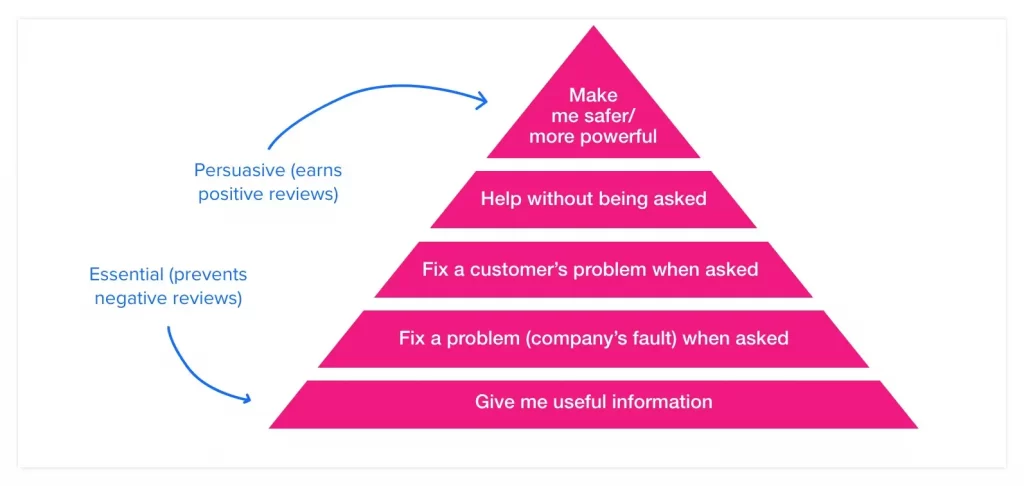
The customer experience pyramid (CX Pyramid) shows how the best customer experiences start at the top and work down through the layers to the bottom. The CX Pyramid outlines three types of customers:
- At the top are “engaged” customers who have a long-standing relationship with a company and are likely to stick with them no matter how great or terrible their experiences may be. These customers are loyal to the brand and understand its value and purpose.
- Next are “acquired” customers who are new to the brand but may still stick with it because it meets their needs. These are the customers you want since they're likely to stay and recommend your brand to others.
- Finally are “lost” customers who haven't been exposed to your brand or are dissatisfied with it. They may be looking for a new brand or supplier and may not be willing to recommend your brand to anyone else.
What Are the Five Key Benefits of the CX Pyramid?
The five key benefits of the CX Pyramid are:
- It's effective
- It's easy to apply
- It's scalable
- It's simple
- It focuses on the customer
How Can This Information Help My Business?
As your business grows and you add more staff to your team, it's vital to ensure your organisation can scale with your business to meet the growing needs of your customers and your employees. The CX Pyramid provides a framework for businesses to focus on developing the most effective customer experience for their unique situation.
The Four Pillars of Customer Experience

Customer experience is defined as the customer's overall experience with an organisation. It includes the organisation's ability to deliver excellent service, a positive customer experience, and a consistent message across the customer relationship.
The Customer Experience Model is built on a foundation of four pillars:
1 – Customer Service – This pillar refers to the customer experience within the four walls of your business:
- Staff – The people that deliver services and interact with customers
- Facilities – The physical environment of your store
- Products – The products and services provided by the business
2 – On-Time Delivery – Customers expect a certain level of availability, whether it's products, staff, or communication
- Communication – The delivery of information and messages
- Availability – The ability of your staff to answer customer questions or requests
3 – Product Quality – Your business should provide high-quality products that solve customers' problems and meet their expectations
- Reliability – The ability to be available when customers need you
- Accuracy – The quality of information delivered
4 – Value – Customers value your business, and they'll reward your company with their business
- Value – The benefits that customers receive from your company
The four pillars are essential for your business to consider when creating an exceptional customer experience. Each pillar positively or negatively affects your business and works together to create an enjoyable customer experience.
The first pillar is customer service. It includes delivering the highest levels of staff engagement and accountability and communicating effectively and efficiently with customers. Poor service can cause customers to become frustrated and leave.
On-time delivery is the second pillar. It encompasses the timeliness of your company's operations, communication, and availability. Customers will be disappointed if your staff is slow to respond or your communications are delayed.
Product quality is the third pillar. It encompasses the quality of your products, your services' reliability, and your communication's accuracy. Good product quality will make customers more confident in your business. In addition, your customers will appreciate the high quality of your products and services.
Value is the final pillar of customer experience. This pillar involves the benefits that your customers receive, as well as the value that you provide to your customers. If you make your customers feel valued, they will be loyal to your business.
How to Improve the Customer Experience
There are many ways to improve the customer experience, but you may be surprised to learn that the following tactics can have a significant impact:
- Invest in the physical facilities of your store. If your business is outdated, it can be difficult for customers to find you and deliver them from one place to another. Your customers are less likely to return to your store if it doesn't look nice or is poorly lit.
- Have reliable, on-time delivery. The on-time delivery pillar includes how often your business is open, how reliable your staff is, and how quickly you communicate with customers. If you don't have reliable service, it will negatively affect your customers' perception of your business.
- Provide high-quality products. The quality pillar includes how well you deliver your products, the accuracy of your information, and the reliability of your services. If your business is unable to deliver high-quality products, it won't be able to deliver a great customer experience.
- Be accurate. The accuracy pillar includes your staff's ability to provide accurate information, your company's ability to communicate effectively, and the quality of your products and services. If your business is inaccurate, it will make your customers' lives more complex, and they'll be less likely to return to your business in the future.
- Provide a consistent message across your customer relationship. The consistency pillar refers to your business's ability to communicate consistently throughout customer relationships. If your business changes its message frequently, it will be difficult for your customers to trust your business.
- Give your customers benefits. The benefits pillar refers to your customer's experiences with your business. By giving your customers something of value, you'll increase their loyalty.
7 Ideas For Engaging Customers
1 – Build Loyalty With Loyalty Programs

Why do people buy clothes, cars, homes, furniture, and computers? Because they enjoy the product and associate their enjoyment with the purchasing decision. When it comes to marketing your brand, what you're doing is building loyalty with your customers.
What is Loyalty Marketing?
Loyalty marketing builds customer loyalty through rewards programs. While traditional marketing focuses on brand awareness and acquisition, loyalty marketing focuses on retention. By rewarding customers for being loyal to your brand, you make them feel valued and more inclined to spend time with your brand. This leads to increased sales and, ultimately, profits.
Businesses, large and small, use loyalty marketing. For example, in the past decade, Starbucks has built its brand by giving away free coffee with every purchase. Similarly, Apple has created a loyalty program by offering its customers an exclusive iPhone app.
Loyalty programs can also work for hotels and restaurants by offering discounts to repeat guests or giving people special access to VIP rooms, such as the opportunity to order a steak before it's released to the public.
Why Shouldn't I Use a Loyalty Program?
Just because a company uses a loyalty program doesn't mean they are successful. Instead, look for companies that build their reputation and brand value by offering customers exclusive experiences and rewards programs that are truly useful and appreciated.
While it's true that many businesses reward their customers with coupons, gifts, and special perks, it's essential to avoid creating loyalty programs that are too generic. The best loyalty programs are tailored to the individual and are highly targeted.
What Are Some Good Rewards and Loyalty Programs?
Many loyalty programs have been designed around popular brands. However, some are based on scientific research. The Mayo Clinic offers the Mayo Clinic Care Program, which encourages patients to eat healthy, exercise, and get checked regularly. Patients who complete the program receive discounts on healthcare services.
CVS and Target offer rewards programs that allow customers to earn rewards points for using the retailer's products. In return, consumers receive discounts on future purchases.
Starbucks rewards its customers by offering them free drinks and discounts on food. However, its rewards program is much more than a simple discount card. Each time a customer uses a mobile app, they earn Stars. Every 500 Stars earns a free drink, and 1,000 Stars earn a free meal.
These programs are helpful because they can be personalised. Starbucks can send customers promotional messages and offers based on how their behaviour impacts the business.
Your loyalty program must be as unique as your brand. It would be best if you tied it to a specific product or service that you provide.
2 – Make Promotions Work For You
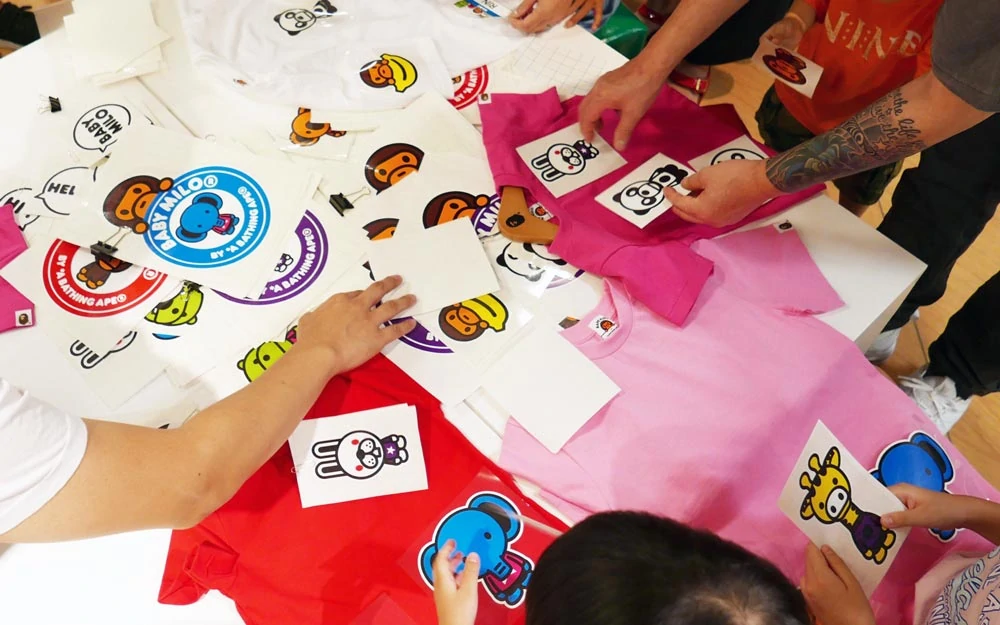
It's tempting to think you must do marketing in a certain way; if it's not, the promotion won't work. But that thinking isn't true.
Marketing should be flexible. When done well, marketing can help you connect with your audience in a personal and meaningful way, and the promotion can be successful whether it's done the traditional way or in a nontraditional way.
So, how do you ensure you get the most out of your marketing and promotions? Here are a few tips:
- Keep the message simple. Think about how your message will be received and by whom. Your goal is to communicate your purpose and inspire others to take action. If you use complex language, you risk confusing your audience.
- Be consistent. Make sure your audience sees your brand's personality in every interaction. Whether you're talking with clients, social media followers, or email subscribers, you want to maintain the same tone throughout your marketing.
- Be genuine. Authenticity is the key to engaging with your audience and making connections. They won't trust your message if you're not connecting with your audience. So, be genuine. Let your audience know that you're real. If you're not open and honest, you might lose your audience.
- Take advantage of nontraditional platforms. Nontraditional platforms can reach your audience in unexpected ways. The best tools include email, social media, and customer service. If you're not using these platforms, you're missing a chance to build a relationship with your audience.
- Make your content unique. Everyone knows that content is king, but you must create quality content relevant to your audience. The better your content, the more people will engage with your message.
- Don't forget to take care of the details. Do your research. Understand your audience and the competition. Create content that's specific to your target audience. Also, be sure you're using your platform's best content, including images.
- Think about the benefits of marketing that don't require purchase. Consider free giveaways, contests, or events to help you connect with your audience. And don't forget to reward your loyal followers. You'll gain more influence and credibility.
3 – Use Technology To Give Away Free Stuff
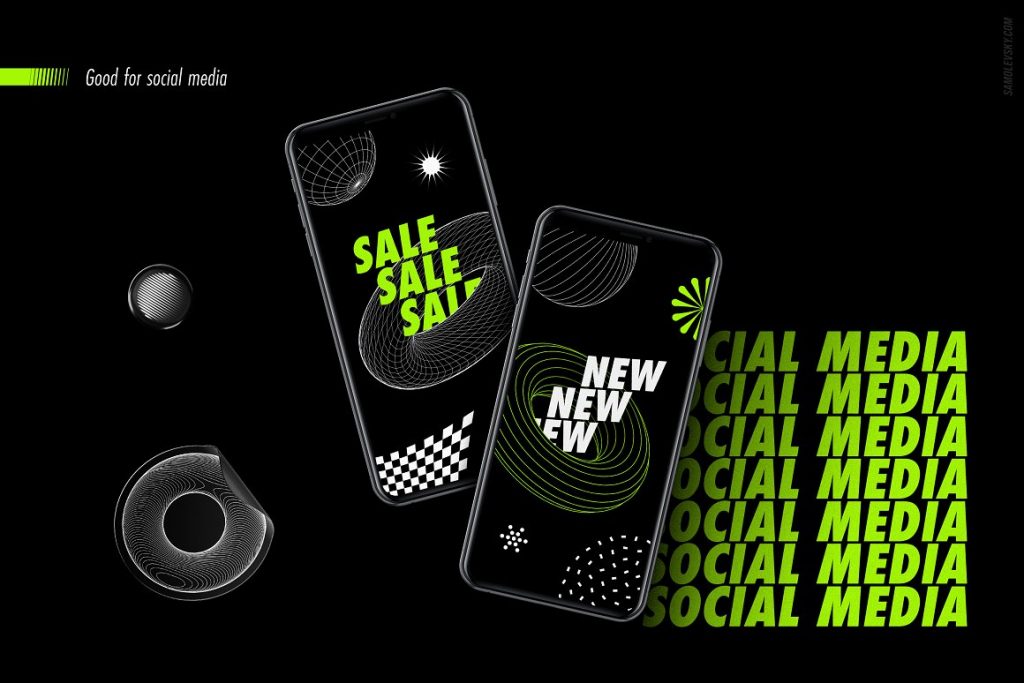
Should you give away free stuff?
The short answer is, “it depends.” Depending on your goal, one side may be better than the other. For example, I'm always a fan of a company that does giveaways and events. It gets them seen and noticed, but also, it gets their product seen and noticed, which is excellent for them. On the other hand, it could be a huge liability for them. If you don't have control over the giveaway, it might be best to leave it alone. Also, it would be best to consider your brand and what you're trying to convey to the potential audience.
Free Stuff Is Good
Giving something away for free is a fantastic way to get people excited and to try a new service or product. You are sending a message to your target audience by offering a freebie. You say, “I want to connect with you, and I am willing to share my time and resources with you for free. Will you do the same?” They will appreciate it if you're offering something genuinely worth their time.
On the other hand, you don't want to give away something that isn't valuable to them. For example, if you are running an event and offering a ticket for $30, offering the same thing for free will be very disheartening to your attendees. A ticket to an event is something they should be paying for, and doing so, makes them feel valued.
Free Stuff Isn't Always Better
Things aren't always as black and white as they seem regarding giveaways. If you offer something so limited in supply that it would be unfair to offer it to one person, it may be better to offer it for free to anyone who wants it. For example, if you are running a contest for a new product with only 1000 samples available, it is best to give all of them away. You are letting everyone know about your new product, but also, you are keeping your target audience interested and engaged.
If you are marketing an experience, it's a good idea to offer people the chance to win tickets, and then you can give them away in person or online. This allows your customers to meet your employees or to connect with you through social media.
Keep In Mind That People Will Try to Cheat
One of the reasons that giving things away is a bad idea is that people will try to cheat. Some people may see it as an opportunity to make money off someone else, or maybe they'll try to get a freebie just because it is being offered for free.
If you are offering a giveaway with limited tickets, it is vital to have a mechanism in place to ensure that you can track who has won and who hasn't. You can use software like Giveaway Management Software (gams) to help you monitor and track every aspect of your giveaway.
Another way that people will try to game your system is by signing up multiple times. They will then get several entries for the giveaway and have a greater chance of winning.
If you're running a giveaway, be sure to put safeguards in place so that this doesn't happen. For example, you can set a minimum number of entries, which ensures that your winners will get their prizes, and everyone else will have to wait. You can also require people to use a unique email address. This way, you will be able to tell who is using the email address for multiple accounts, and you will be able to keep your list clean.
4 – Offer Free Trials
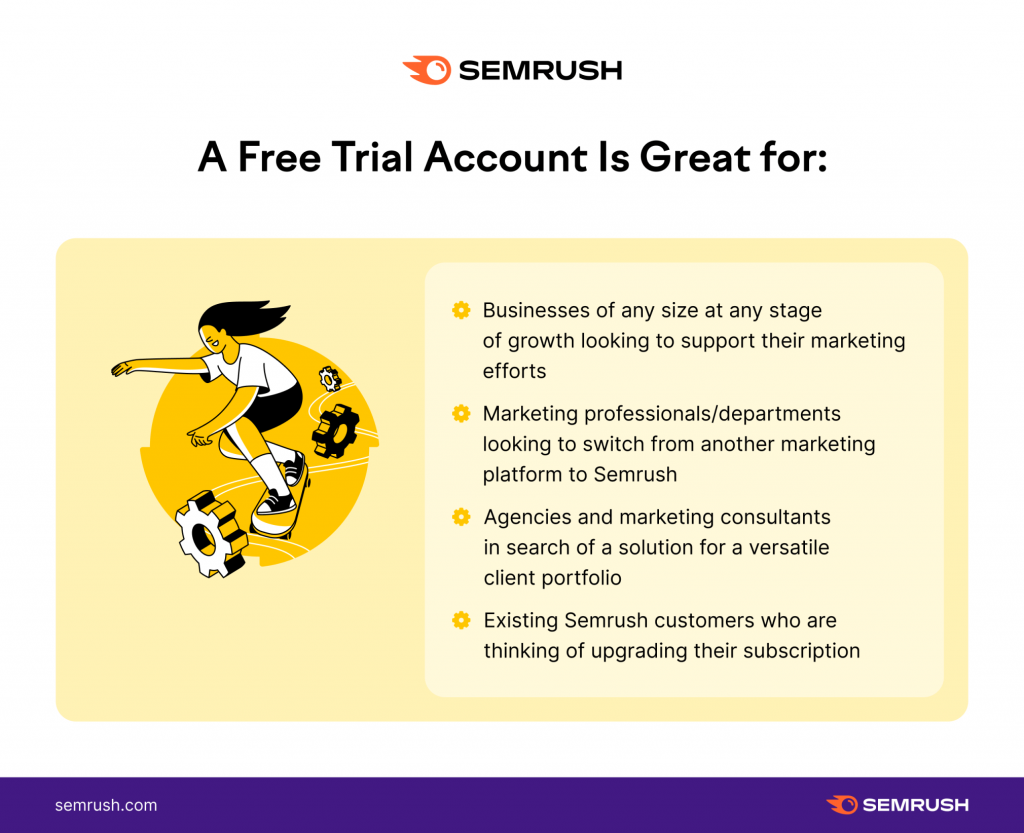
In today's social media era, it's almost impossible to ignore your competitors, no matter where you are. For a local company, you must stay competitive and relevant to survive.
This is why local companies often offer free trials to their potential customers, allowing them to try out the service or product in question before buying.
As someone looking for a solution, this might seem like a risky strategy, but it provides several benefits. It makes sharing your company's unique service or product easy, as everyone can compare the two. Additionally, offering a free trial allows the local business to establish credibility and earn goodwill. In the long term, it builds trust and brand awareness and makes potential customers more likely to buy the service or product.
With that in mind, here are some examples of how offering free trials can benefit local businesses:
Local businesses can show how great they are through a free trial.
By giving away a trial of your service or product, your customers are essentially getting a free taste of what you have to offer. And when you offer it for free, it's a way of saying that you think your product is fantastic, which helps to build trust.
You give away excellent service, so people are willing to pay you.
Giving away a free trial gives your customers a sense of trust and responsibility, so when you charge them later, they won't think, “But I already tried that.”
Your free trial is the perfect opportunity to tell your story.
When you offer a free trial, you can uniquely share your company's story because you've provided your audience with an opportunity to learn more about you.
Free trials are a great way to showcase your products or services.
It's almost impossible to deny the benefits of offering a free trial. As we said earlier, a free trial tells your audience, “I think this is awesome, and I know you'll enjoy it too.” As a result, you can expect to get more people interested in your service or product.
You attract new customers.
People are more likely to trust and like you if you give away something for free. They'll remember your name, and you'll likely get repeat business.
5 – Give Back To The Community
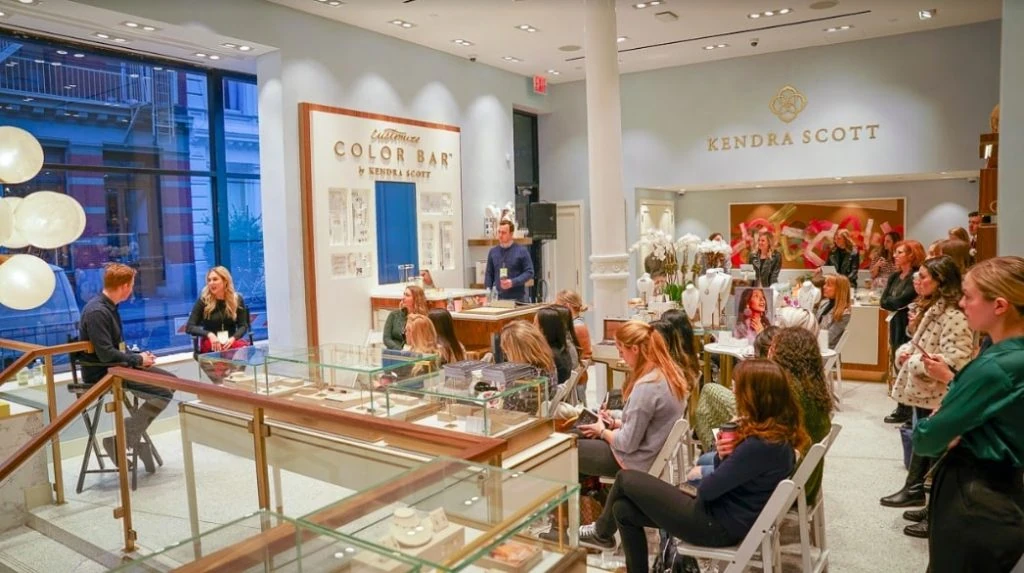
While most businesses market their product through ads today, some prefer to give back to the community by sponsoring events or offering experiences.
Sponsoring local events is a great way to promote a business while giving back to the community. Businesses can promote their sponsorship with banners, signage, or special promotions. When choosing a local event, consider whether the event meets your needs or interests or what's unique to the community you're supporting.
For example, you may want to sponsor an event close to your location or a local charity your employees are passionate about. Or, you may find a local event that appeals to your target audience. This will ensure your sponsorship reaches the most people possible.
As you get to know your community, you'll discover events that align with your mission and values. When selecting events, consider if they align with your brand or company culture. If not, you may look for other events that offer similar things.
By partnering with local events, you'll give back to the community while promoting your business. And by supporting community organisations that are important to you, you'll build brand awareness and encourage consumers to take action.
6 – Show Off Your Best Features

There are two critical aspects to making your experience stand out: 1) What's unique about it, and 2) Why should you do it?
This is the place to focus if you're looking for an answer to why people will buy from you. A “why” strategy will provide compelling reasons that compel someone to buy from you instead of your competitors. It's a subtle distinction, but it makes a big difference.
This is the place to start if you're looking for ways to show off your unique qualities. If people can't tell how unique your business is, they'll assume it's just like every other business in town.
Why People Buy from You
When I was growing up, the classic example of a product that stood out was a lemonade stand. You could taste the difference.
That's why whenever I hear someone say, “I'm not buying from them because they have the same products as everyone else,” it's like hearing, “I'm not going to buy from you because your lemonade isn't any better than anyone else's.”
When people see that you're different and special, they're willing to pay more for the service or product. You want to provide a service that's unlike any other business in town and a product that's so great that people can't help but want to own it.
Here are some ideas to consider for your “why” and “what's special” strategies:
How Will You Make It Different?
One of the easiest ways to distinguish yourself is to explain how you will make your experience stand out. You can use this approach to talk about anything from the quality of your products to your customer service to the uniqueness of your location.
When you explain how you're going to make your business special, people can't help but be intrigued and want to learn more about what you're offering.
Whether it's the best coffee or wine, people are more likely to pay more for a product or service if they're convinced it's worth the extra cost.
The same is true of experiences.
As long as your product or service is unique, people will be interested and want to know more about it. You will use your unique qualities to make your products and services stand out, even when you're selling your services and products on price alone.
What's Special About Your Experience?
When people are looking for something new, they first notice the uniqueness of the experience.
When they enter your location and see your sign that reads, “Experience the best pizza in town,” they're not likely to think, “Oh, it's just like all the other pizza places.” They're going to think, “This is something new.”
They're also going to look around the area to see how your location is distinctive. They're going to look for the “wow factor” to see whether it's worth the trip.
It's no surprise that the biggest competition is often the closest one. You're likely to attract new customers when showing that you're distinct, even when you're located just down the street.
What's unique about your location? Specific amenities or features that make your location stand out from the crowd? Maybe you have a particular location or unique features that are part of your experience that differentiate your business.
Ask yourself, “What can I do to make my location stand out?” Or, “What would make my location special?”
Show, Don't Tell
People looking for something new are often more likely to choose a business that shows that it's different.
This is why it's so crucial for businesses to provide a “wow” experience rather than just a “nice” experience.
When people are looking for a new coffee shop, the ones that get their attention are the ones that seem to use their unique qualities to make their coffee stand out.
When people are looking for a new restaurant, the ones that get their attention are the ones that seem to use their unique qualities to make their food stand out.
You don't have to have a location with a particular location or a unique feature to use the “show, don't tell” technique.
For example, you could provide excellent service by using unique technology. Or you could use unique qualities to sell your products or services.
7 – Build a Community Around the Experience

When marketing an experience, it's essential to build a community around the experience and create a sense of ownership among your customers. This can take several forms, including using social media platforms, creating a Facebook page, and even having a physical location open to the public.
Communities help to create a sense of ownership among your customers. They can be created around a theme, such as “experiences”, “lifestyle”, “food”, “art”, or “wine”. Communities are typically based on a product but can also be based on an event or organisation.
One example of this is the CannaVenture Community. It was founded as a Facebook group that grew to have over 20,000 members who shared information about the cannabis industry and other related topics. Eventually, they spun it off into a website with events, a forum, and a marketplace.
Another example is CannaMeetup.org, which was created to bring together the cannabis community to discuss the latest industry news, share resources, and connect with other entrepreneurs.
These communities are built to facilitate conversations that build interest in the experience. They can serve as a platform for marketing but are most valuable when they're also used as a customer resource. For instance, the CannaVenture Community has an app that can be used to find events and a database of cannabis professionals.
Community Building and Customer Relationships
It's not uncommon for companies to use customer support forums to communicate with their customers. These forums allow customers to ask questions or share comments about a company.
Forums can also be used to build relationships. Some forums are set up as a place for customers to share their experiences with a company, which creates a sense of ownership among customers. A simple way to build this sense of ownership is to give the forum visibility. For example, you could add a link to the forum to a company's blog or website.
Social Media Platforms
When using social media platforms like Facebook, Twitter, and Instagram, you must consider the audience and message you want to convey. When building communities around your experiences, you'll want to create posts that resonate with your audience.
You can also use the space to promote your event, offer exclusive content, or engage with customers in a casual conversation. For example, CannaMeetup.org has a blog where the founders post articles about the cannabis industry, while the CannaVenture Community has a “Forum” where customers can post questions.
Facebook pages are an excellent way to connect with your community. You can use a Facebook page to post announcements about events and promotions if you have a physical store. It's also a great way to keep your community connected and engaged.
Instagram is another great way to share images and videos about your experiences and promote them on your website or social media profiles.
Conclusion
Marketing an experience is a bit different than marketing a product or service. While making money selling things online is still possible, there are more opportunities to create a brand that people will remember.
People like to buy experiences, and they will pay for them. They prefer to have them delivered in person. If you are selling a product or service, the best way to market it is to sell it.
But when you are marketing an experience, you can start by building a brand around that experience. People naturally want to buy your product or service because they are trying to solve their problems.
There are many ways to go about marketing an experience. You can create a product or service that solves a problem. You can write a book. You can create a podcast or video. You can start a blog.
Want to learn more about how to create a successful online business? Check out my free newsletter below!
